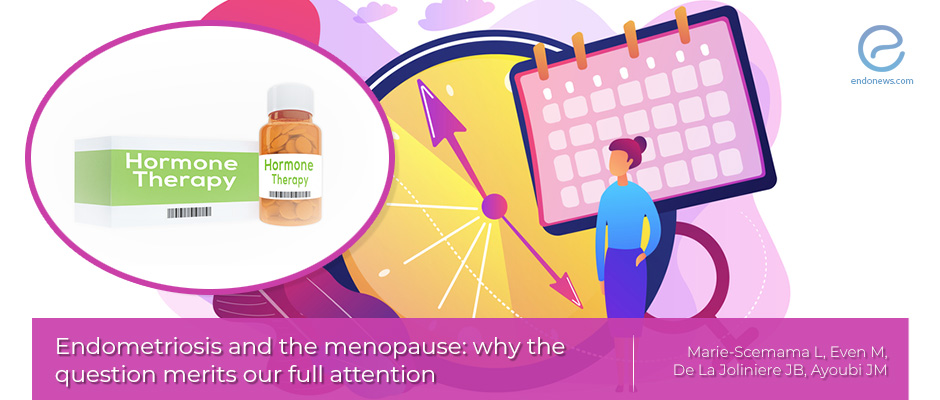Consquences of endometriosis in menopausal period.
Oct 16, 2019
Around 2-4% of endometriotic women are estimated to suffer from endometriosis after menopause.
Key Points
Highlights:
- Clinicians should think twice when prescribing estrogen or estrogen-progestin to endometriotic patients in their postmenopausal period, even after surgical removal of ovaries and uterus.
Importance:
- Although endometriosis is known as an intraperitoneal benign condition, it has a nature convertible to a malignancy that can metastasize ovaries, bowel and even lungs.
What's done here:
- The authors discussed current data about postmenopausal endometriosis and its treatment regarding literature and call attention to prescribing hormone replacement therapy to them.
Key Results:
- Clinicians must take into account the recurrence of endometriosis in the postmenopausal period of women, especially when they have pelvic pain and abnormal vaginal bleeding.
- Clear cell carcinoma and endometrioid carcinomas are the most commonly seen malignancies arising in endometrioma and endometriosis.
- The risk of malignancy development pushes clinicians to select the first-line treatment of postmenopausal endometriosis is to be surgical.
- Medical treatment consists; levonorgestrel intrauterine device, gestodene or aromatase inhibitors.
- Prescribing hormone replacement therapy to women with endometriosis after menopause increase the risk of recurrence, so clinicians should debate the risks and benefits before.
Lay Summary
Marie-Scemama et al. from Foch Hospital, Suresnes, France, referred to endometriosis and menopause which is an actual cruising topic and recently published it in the journal named "Hormone Molecular Biology and Clinical Investigation".
Endometriosis a well-known estrogen-dependent disease has three distinct phenotypes: Superficial peritoneal endometriosis, ovarian endometrioma, and deeply infiltrated endometriosis. Moreover, this disorder frequently associated with adenomyosis.
The mystery about the development of endometriosis is why different forms of the disease are presented in different patients or why all types can be seen in the same patient. The heterogeneous character of the disease always put clinicians into alert about its diagnosis, treatment and, recurrence.
According to Bulan theory, after menopause aromatase is expressed in endometriosis implants and ectopic endometrium. When endogenous or ectogenous estrogens get on the stage for any reason, they stimulated COX2 to produce Prostaglandin E2 and to cause newly aromatase activity.
Taking reference to the Bulan theory, there is a positive feedback loop between E2 and endometriotic lesions which creates a danger to prescribe HRT to those women.
After surgical menopause, HRT treatment for climacteric symptoms could cause the recurrence of the disease.
On the other hand, endometriosis is strongly associated with the increased risk of ovarian cancer and EAOC shows favorable characteristics including early-stage disease, low-grade disease and specific histology such as endometrioid or clear cell carcinoma.
The risk for malignant transformation makes the first-line treatment surgery which serves to treat the pain and to eliminate the malignancy risk.
Research Source: https://www.ncbi.nlm.nih.gov/pubmed/30913034
clear cell carcinoma endometrioid carcinomas ovarian cancers HRT treatment after menopause Bulan theory COX-2 DIE Prostaglandins E2 aromataze activity endometriosis.

